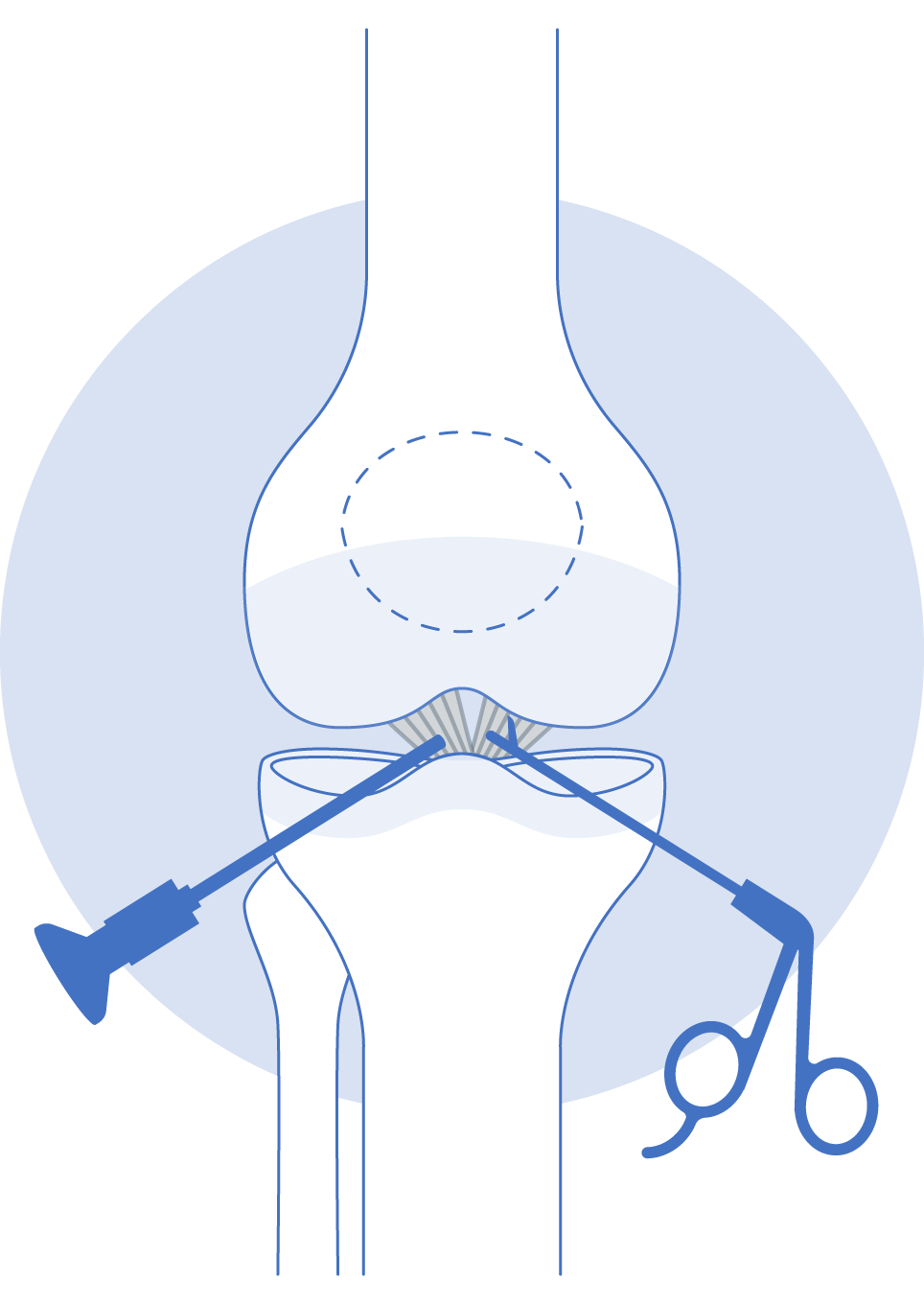

KNEE ARTHROSCOPY SURGERY
This is the ‘keyhole’ approach to the knee where I can assess and treat all intra-articular structures. Under a general anaethetic small( 5mm) portals are created. The knee is then filled with fluid allowing visualisation of commonly damaged structures using a small camera. A number of different very small instruments can then be introduced to treat the damage:
- Defects of the articular cartilage the smooth lining over the bones ends that create the joint. A number of different treatment options exists depending on the type and location of damage
- Tears in the meniscus, this is the flexible component of the joint that is prone to tears that displace and therefore cannot heal. These can be repaired or debrided
- Assessment of a tear or rupture of the cruciate ligaments (anterior cruciate ligament; ACL, and posterior cruciate ligament; PCL). This is a central intra-articular ligament that controls rotational stability of the knee important for pivoting and cutting movements. Reconstructions use a combination of arthroscopy and open surgery to take the tendon graft
- The synovial lining produces the fluid which lubricates the knee. If it is inflammed too much fluid is produced and the knee remains swollen. A synovial biopsy may help determine a cause for this.
